Tips that Will Help You When Bathing a Cat

Bathing a cat may seem like a challenging task, but with the right approach and preparation, it can become a manageable and even rewarding experience.
Whether it’s for hygiene, flea treatments, or simply to keep your cat’s coat healthy, here’s a step-by-step guide to help you bathe your cat in the safest and least stressful way possible.
Preparing for the Bath
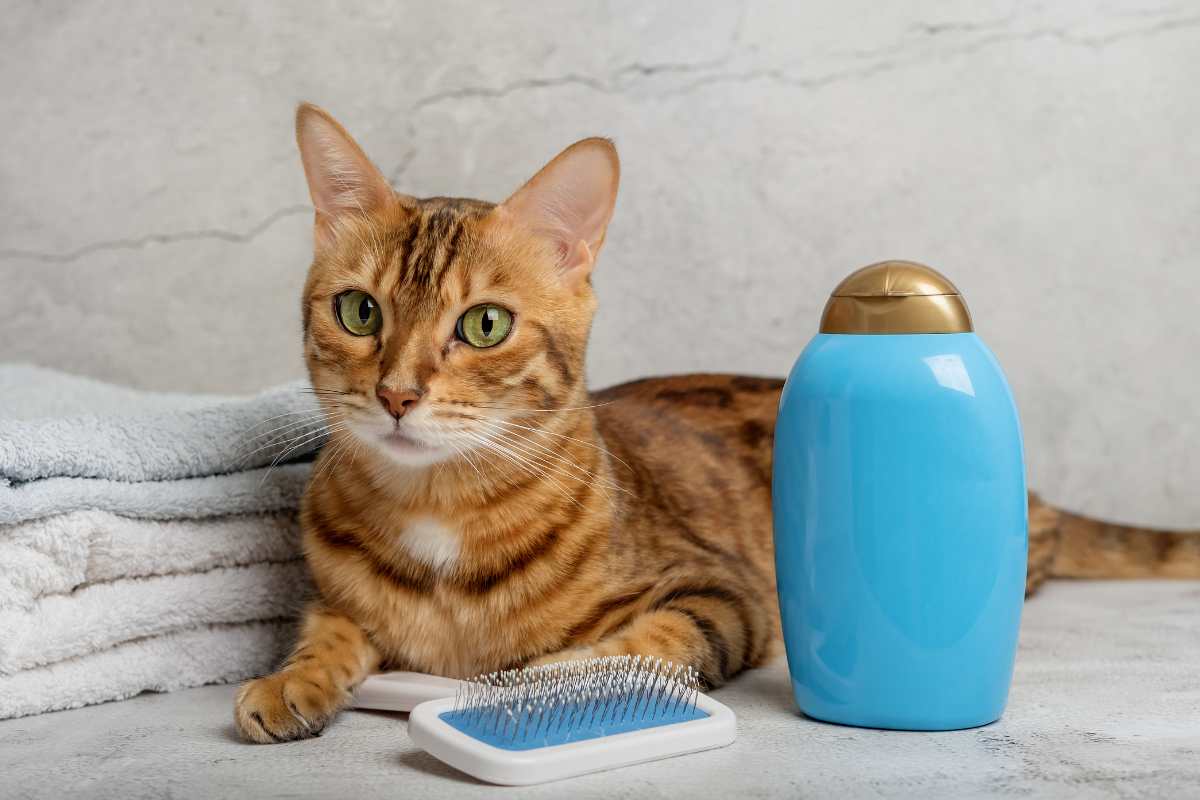
Choose the Right Location
Choosing the right place to bathe your cat is crucial for a smooth experience. Ideally, you should use a sink or a small bathtub, as these provide a controlled space where your cat can’t easily escape.
If you're using a bathtub, be sure to place a non-slip mat at the bottom. This will help your cat feel more secure and prevent slipping, which can lead to anxiety.
Before you begin, ensure the water is lukewarm—around 30°C (86°F). Water that is too hot or too cold can stress your cat, so it’s important to get the temperature just right. Test the water with your hand to avoid any discomfort for your pet.
Gather the Necessary Supplies
Before bringing your cat to the bath, have everything ready to make the process go as smoothly as possible. The essential items you’ll need include:
Cat shampoo: Make sure to use shampoo made specifically for cats. Human shampoos or those for dogs can irritate their skin. Cat shampoos are gentle and formulated to cater to a cat’s sensitive skin.
Soft towels: You will need a soft towel to dry your cat afterward. It’s important to have towels that are absorbent and gentle to avoid causing any discomfort or skin irritation.
Sprayer or small cup: A sprayer is the best option for wetting your cat, as it provides a gentle stream of water. If you don't have one, a small cup can also work, but be gentle and pour slowly.
Treats: Always have some treats on hand. Offering a treat at the end of the bath is a great way to reward your cat and help them associate the experience with something positive.
Brush Your Cat Before the Bath
Brushing your cat’s fur before the bath is an important step that many people overlook. Brushing removes loose hairs and tangles, making the bathing process more effective and preventing mats from forming when wet.
It also allows you to spot any skin issues, such as irritation or parasites, before they become a problem. If your cat has long hair, be extra careful to detangle any knots.
During the Bath
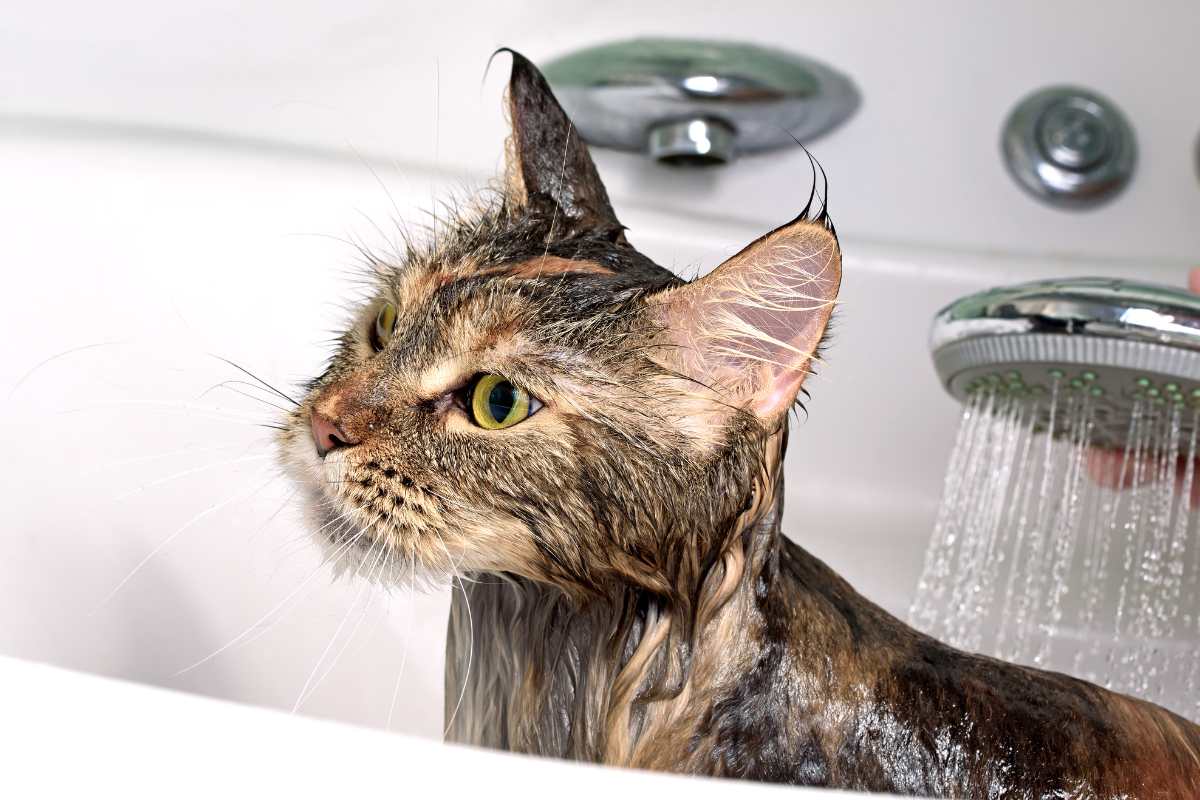
Wet Your Cat Slowly and Gently
Cats can be fearful of water, so it’s important to introduce water gradually. Start by gently wetting their paws and legs before moving up to the rest of their body.
Avoid getting water on their head initially, as this can cause them to panic.
Use the sprayer or cup to slowly pour water over your cat's body. If you’re using a sprayer, keep it on the lowest setting to avoid startling them.
Speak calmly to your cat as you wet their fur, reassuring them that everything is okay.
Apply the Shampoo
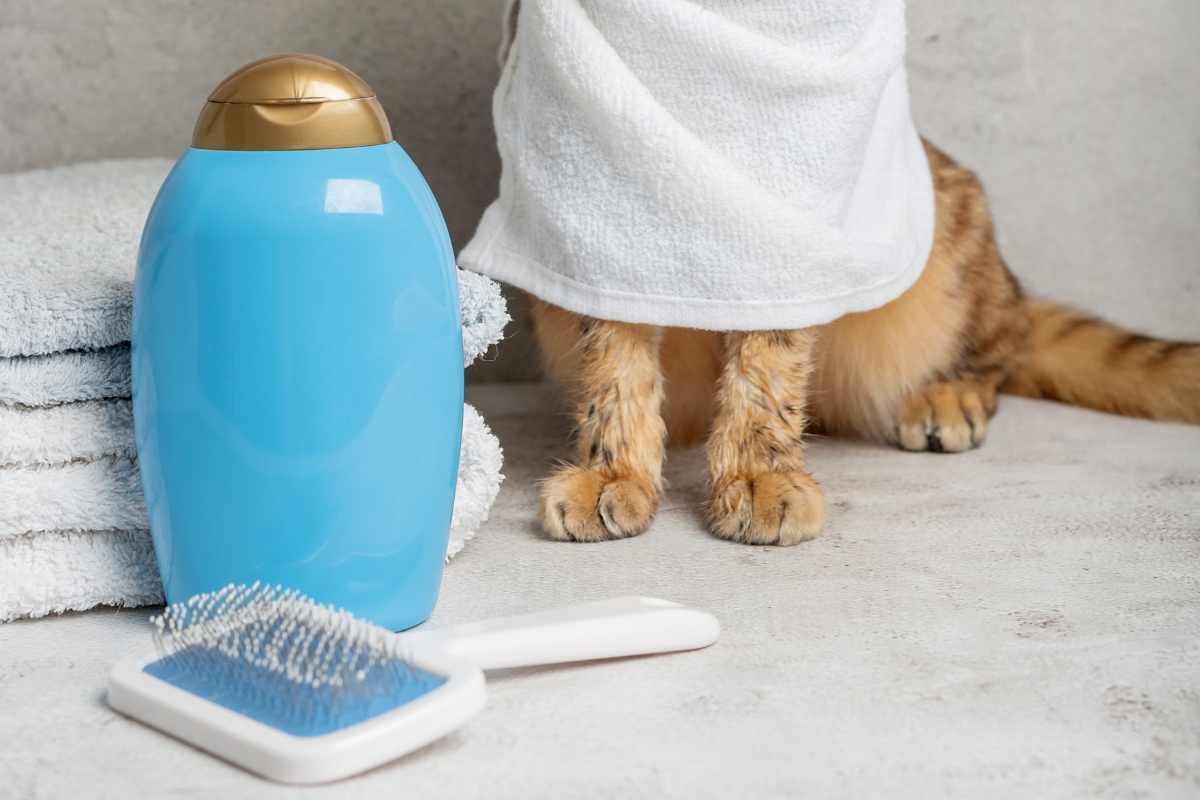
Once your cat is sufficiently wet, you can apply the shampoo. Use a small amount of cat-specific shampoo and massage it into their fur.
Start from their neck and work your way down to their tail. Be gentle and avoid rubbing too hard, as this could irritate their skin.
Avoid getting shampoo in their eyes, ears, and face, as this can be uncomfortable and potentially harmful.
Cats often don’t need a lot of lather, so focus on lathering the shampoo thoroughly on their belly, legs, and back, where dirt tends to accumulate.
If your cat has long fur, you may need to apply a little more shampoo to get through the thicker coat.
Rinse Thoroughly
It’s very important to rinse all the shampoo out of your cat’s fur to prevent irritation.
Use the sprayer or a small cup to gently pour water over them until the water runs clear, indicating that all the shampoo has been washed away.
Make sure to avoid getting water in their face. Rinsing thoroughly is key to ensuring no soap residue is left on their skin, which could cause dryness or irritation.
After the Bath
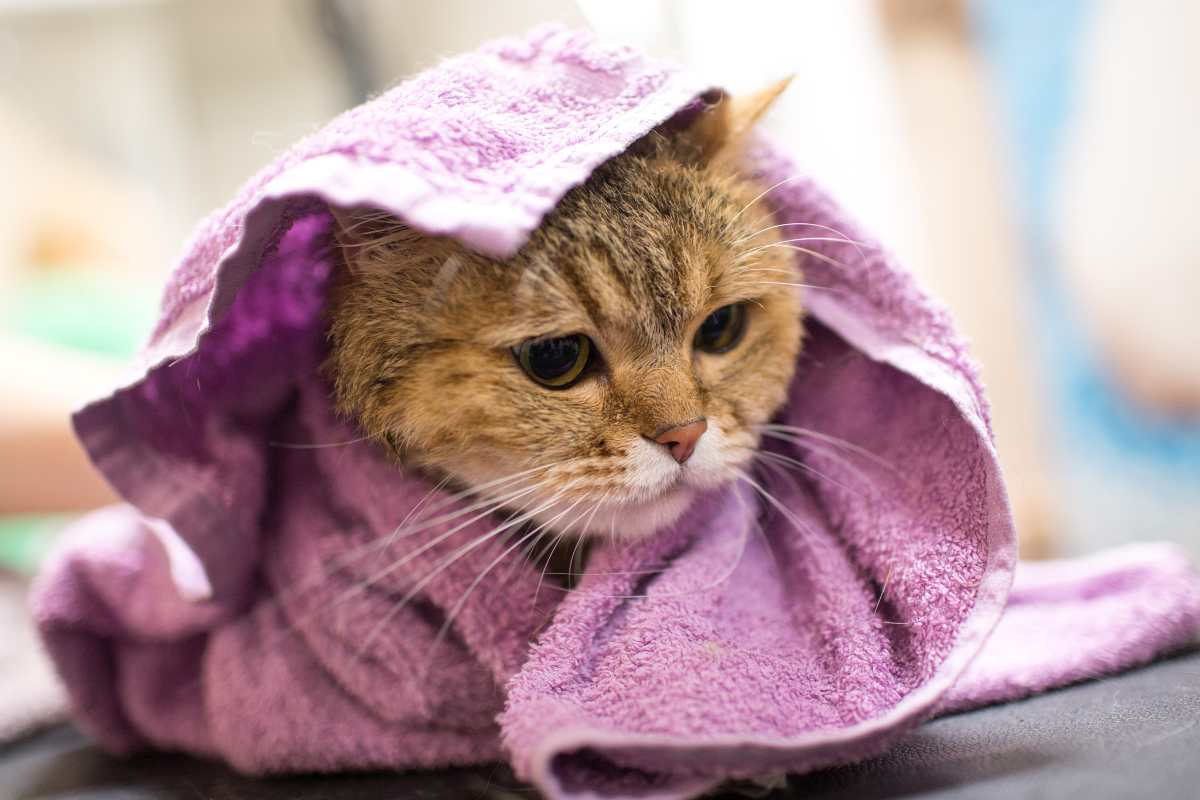
Dry Your Cat Gently
Once you’ve finished rinsing, wrap your cat in a soft towel and gently pat them dry. Do not rub vigorously, as this can cause tangles and irritate their skin.
Pat the towel onto their fur, especially in areas where moisture tends to collect, such as the underbelly and between their paws.
If your cat allows it, you can also wrap them in the towel and let them air dry for a few minutes before drying off the rest of their body.
Optional: Use a Blow Dryer
If your cat is comfortable with the sound of a blow dryer, you can use it on the lowest, cool setting to help dry their fur.
Keep the dryer at least a few inches away from their body, and avoid using hot air as it can burn their skin.
Always reassure your cat with a calm voice during this process to prevent them from getting scared. However, if your cat shows signs of distress, it’s better to skip the blow dryer and let them air dry naturally.
Reward and Reassure Your Cat
Bath time can be stressful for your cat, so reward them with treats, affection, and playtime after the bath.
This helps to reinforce positive associations with the experience. Spend some quiet time with your cat, offering them comfort and reassurance to help them feel calm and loved.
Tips for Handling Cats Who Fear Water
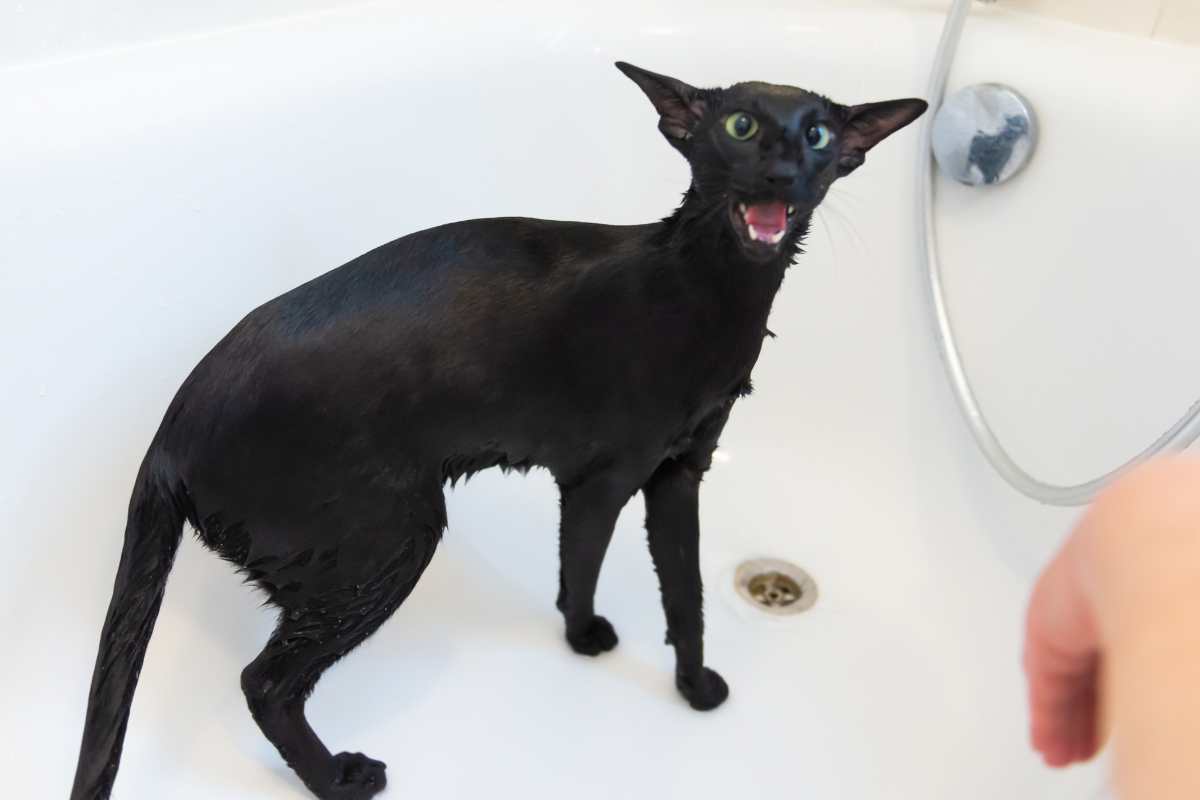
Gradual Introduction to Water
If your cat is particularly scared of water, don't rush the process. Start by introducing them to the bathing area without water to allow them to explore it at their own pace.
Gradually introduce small amounts of water, starting with their paws and then working your way up.
Use a sprayer or small cup to gently wet your cat. Avoid splashing as it may startle them. Keep the water temperature lukewarm to make the experience more comfortable.
Calm Your Cat Throughout the Process
Cats are highly sensitive to human emotions, so it’s important that you stay calm. If you are anxious, your cat will sense it and become even more stressed.
Speak in a soothing voice and take your time. If your cat is particularly agitated, take breaks between each step, allowing them to calm down before proceeding.
Restrain Gently if Needed
If your cat becomes too agitated, gently restrain them using one hand while bathing them. For extremely difficult cats, consider using a grooming loop to help keep them steady without causing harm.
Always make sure to hold your cat securely but gently to avoid causing panic.
Final Thoughts
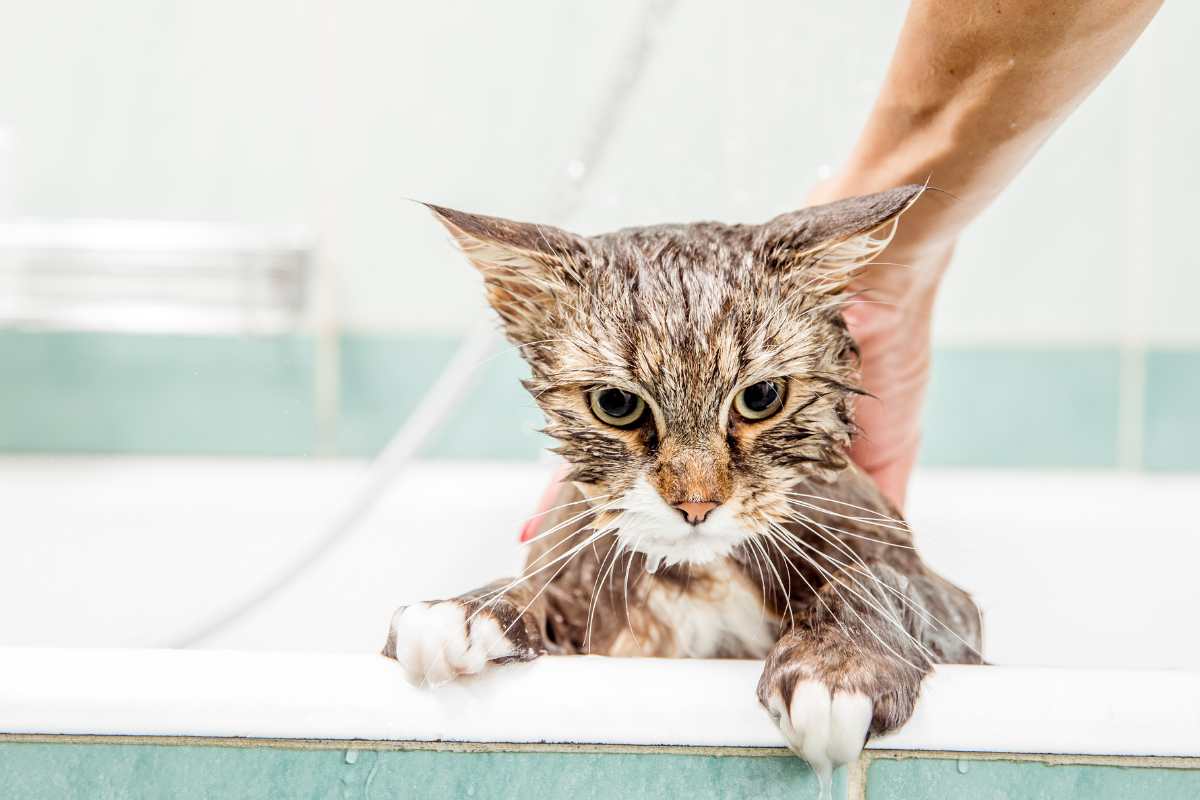
Bathing your cat may seem intimidating, but it doesn't have to be. With the right preparation, gentle handling, and plenty of patience, you can make bath time a less stressful experience for both you and your cat.
Remember to take your time, stay calm, and reward your cat afterward to help them associate the bath with a positive experience.
By following these steps and using the right products, you can maintain your cat's coat and skin health while ensuring their comfort throughout the process.
Patience is key, and over time, your cat may even start to tolerate, or maybe even enjoy, bath time!
Enjoy This Video Tutorial About Cats

Source: Cole and Marmalade
Did you find this post useful or inspiring? Save THIS PIN to your Pets Board on Pinterest! 😊


You may also like